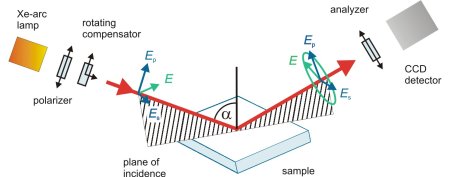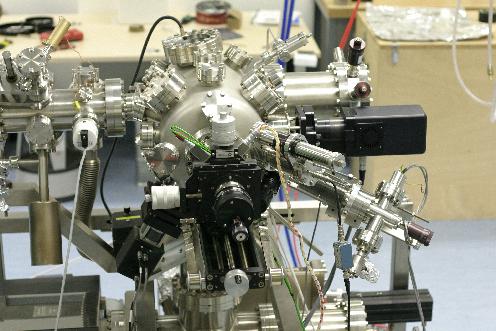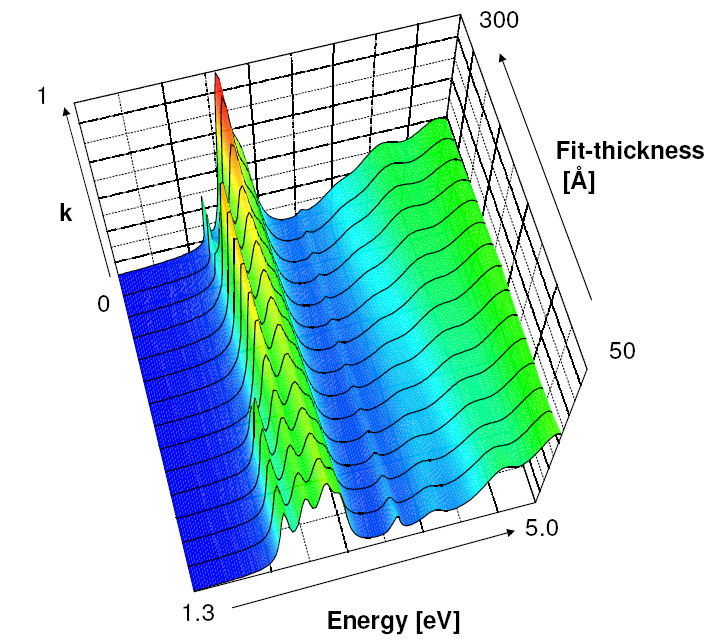Real-time Ellipsometry
Ellipsometry, first employed by P. Drude in the late 19th
century, is a optical technique that uses polarised light to probe
the dielectric properties of a sample. Due to its high sensitivity
it can provide information about thin films starting in the
monolayer regime. In combination with other techniques, such as
X-ray scattering, a range of
properties such as layer thickness, morphology, and chemical
composition can be studied.

|
Ellipsometry generally measures two of the four Stokes
parameters, denoted as Ψ and Δ. These depend on the
components Rp and Rs of the reflectivity via

From this (complex) ratio of reflectivities, the
fundamental equation of ellipsometry, the optical properties
of the sample and the layer thicknesses can be
determined.
|
This requires a modelling procedure which takes into account
the Fresnel
reflection coefficients (including multiple reflections).
Unlike other spectroscopic techniques ellipsometry does not
require intensity calibration of the measured light
A particularly attractive feature of ellipsometry is its
insensitivity to the intensity of the measured light.
Further details can be found in this introduction to ellipsometry provided by the
J. A. Woollam Co.
As the ellipsometer can be mounted to our ultra-high vacuum
system in situ studies during the growth of the film are
feasible.
- The organic thin films are prepared by
organic
molecular beam deposition.
- A spectroscopic ellipsometer (Woollam M2000) aquires
Ψ and Δ for wavelenghts between 245 nm and 1000
nm.
- This in situ technique allows realtime
measurements with good time resolution during growth.
- A fit procedure, implemented in the analysis software,
yields the optical constants n and k over the complete
spectral range.
|

|

|
In a current project, we are combining organic molecular beam deposition with
real-time ellipsometry. This allows us to see how the
electronic transitions of the material change during
growth.
Using complementary information from x-ray scattering experiments allows
us to learn how functional properties (band-gap, electronic
transitions) relate to the thin film structure at interfaces.
|
For our previous work on ellipsometry, see our list
of publications.



